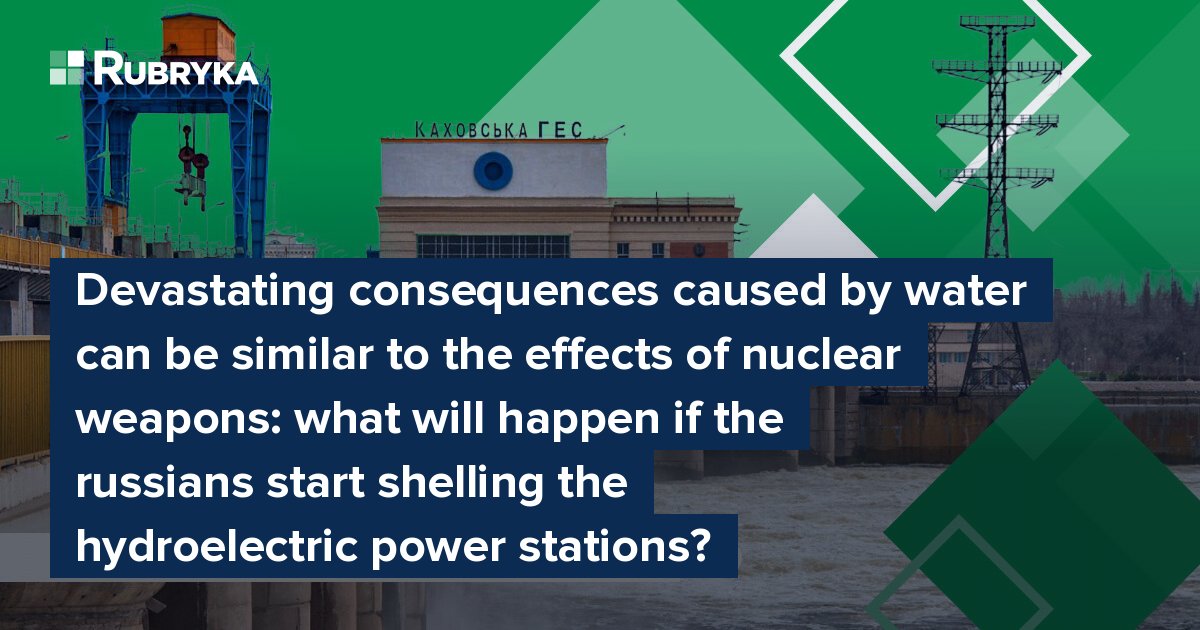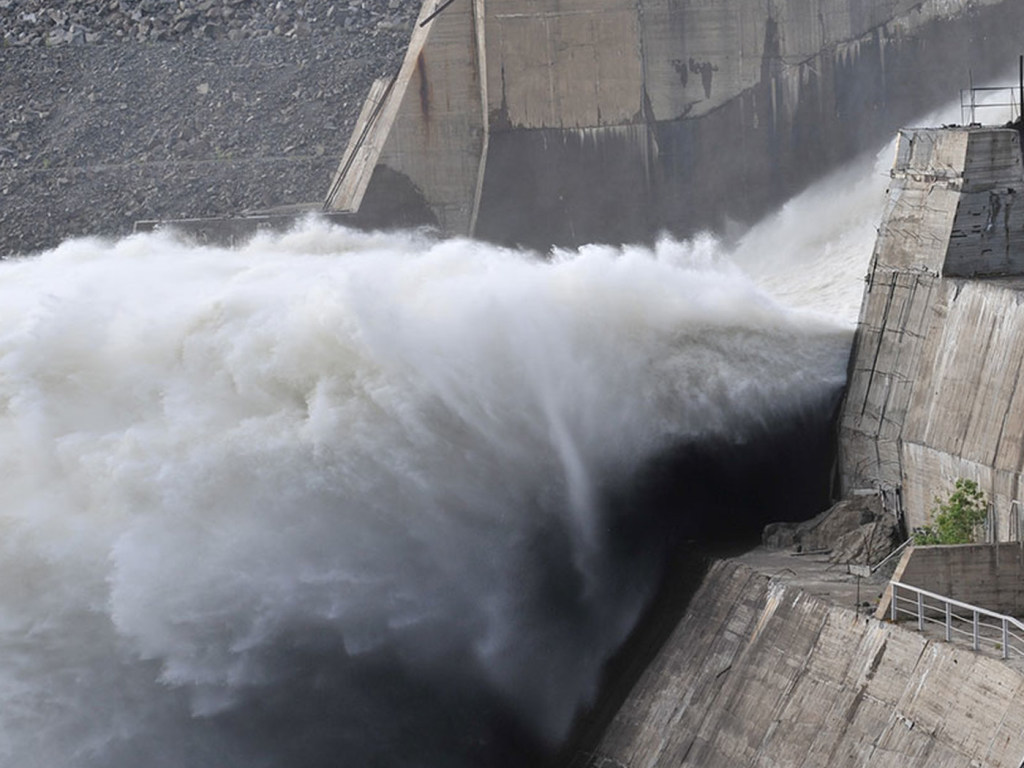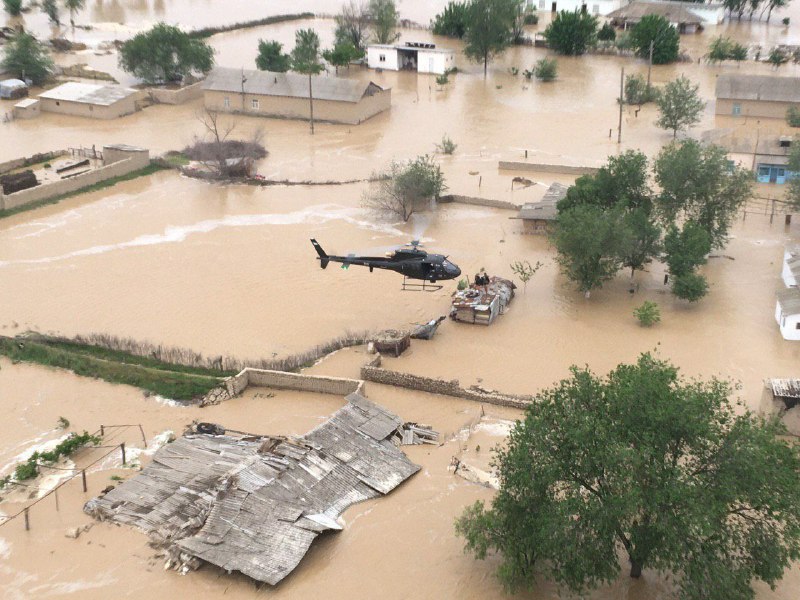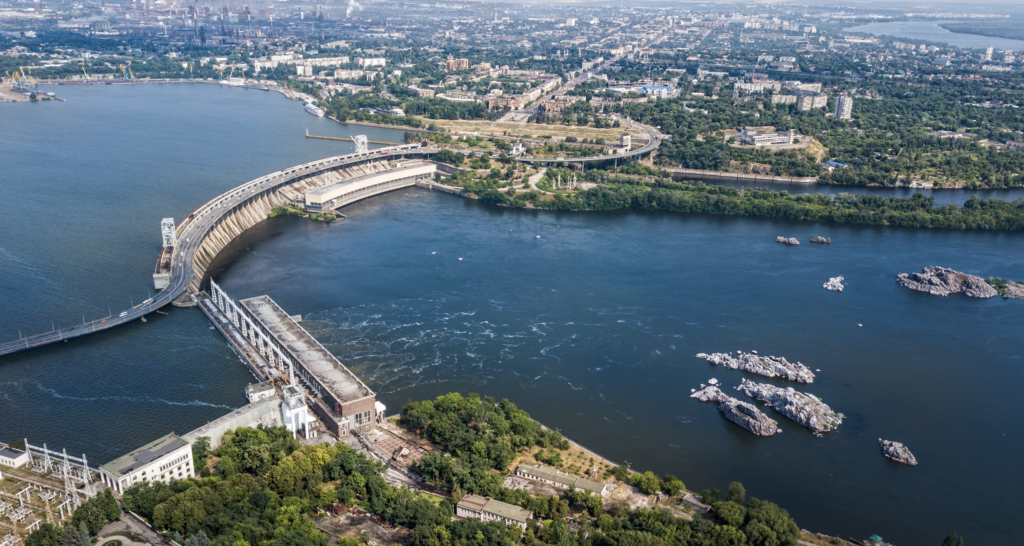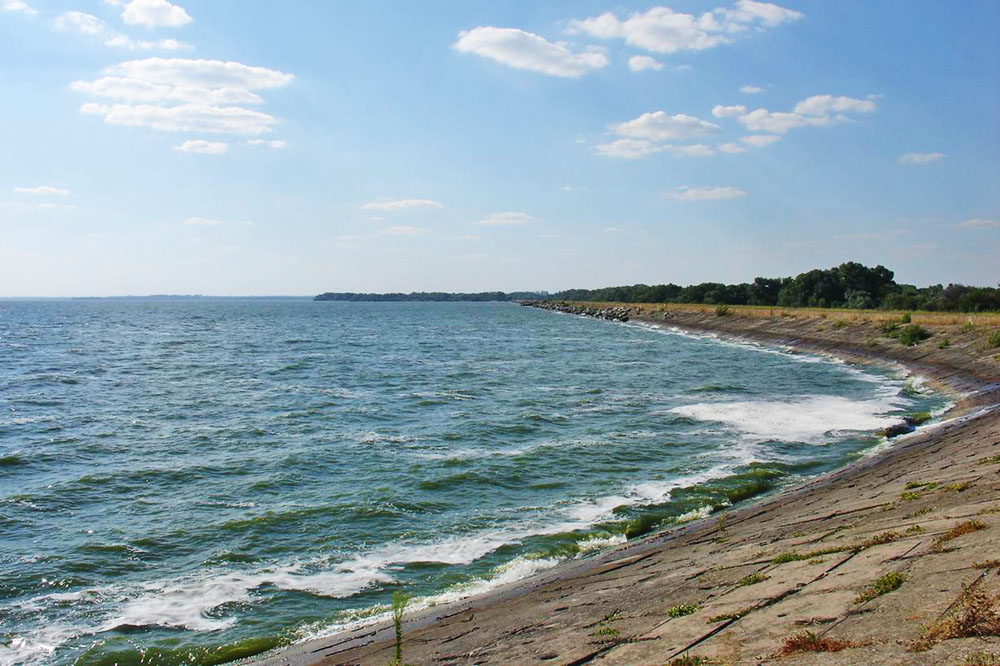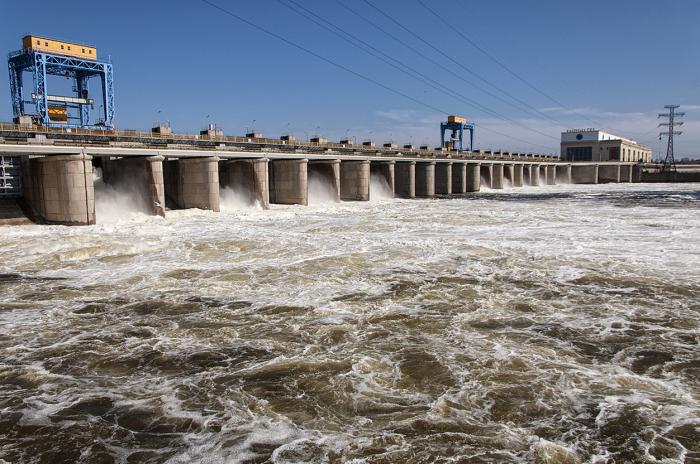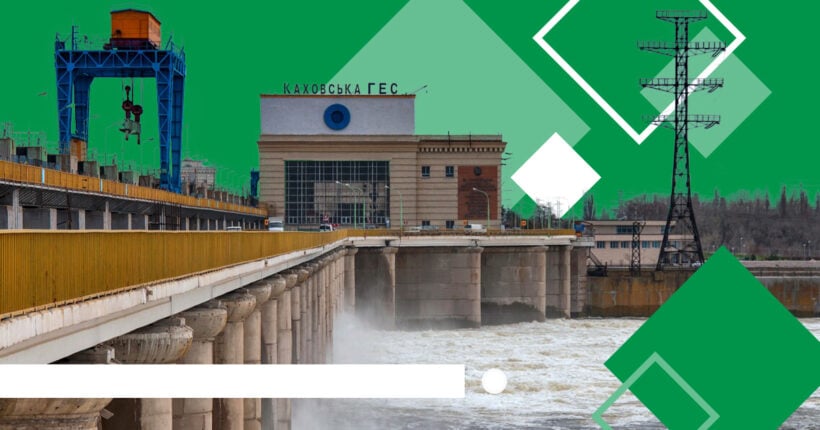
What is the problem?
Since the beginning of the full-scale war, the russians have been shelling the Kakhovska HPP in the Kherson region, which is part of the United Energy System of Ukraine. It provides coverage of peak loads, frequency and power regulation, and a mobile emergency reserve — a vital object of Ukraine's infrastructure security. The Dniproges, Kremenchuk, Middle Dnipro, Kyiv, and Kaniv HPPs are now under threat of shelling.
All these objects in the hands of the enemy can not only leave us without electricity. As it turned out, they can be weapons of the occupier, which can cause catastrophic consequences for the lives of Ukrainians and the environment.
Rubryka learned about the potential consequences of russian attacks on Ukraine's hydroelectric power stations. Further in this article, how this threatens the environment, what the immediate impact might be, and what to do in the event of an HPP attack.
Water as a weapon
The use of water as a tool to achieve military objectives is not a new phenomenon. A failed dam can flood lands and cities far downstream.
We had many historical examples when the capture of strategic water infrastructure and its destruction was a military objective. For example, Kurdish forces attacked Iraqi waterworks during the Gulf War. And during the Second World War, the Dniproges was blown up by the Soviet authorities not to "let" the German troops further to the East and sink the enemy units in the floodplains.
Of course, the local population did not know about the planned detonation. On August 18, 1941, a thirty-meter water avalanche flooded the entire lower part of Zaporizhzhia, sinking dozens of ships along with their crews. We do not know how many people died among the local population, and there are only data on the death of about 1,500 German soldiers. Tens of thousands of buildings, food, and military ammunition were destroyed.
Damage zones, nuclear bombs, and environmental damage
What happens when a dam breaks?
"They say that we do not have nuclear weapons in Ukraine, but the breach of any dam in terms of devastating consequences, including environmental ones, can easily be compared to the atomic bomb explosion," environmental monitoring expert Maksym Soroka comments.
The expert spells out to us the entire level of danger from the destruction of the dams:
"Everyone should understand that one cubic meter of water weighs a ton: imagine the amount of water in a meter-by-meter cube – that's one ton. Dams contain a huge mass of water, millions of tons. Remember the general physics course from the 9th grade? Force is mass multiplied by acceleration, and when that mass accelerates, we have a force of thousands of kilotons, and these forces are enough to destroy concrete. The devastating consequences become catastrophic. We should talk about environmental consequences last, but they are present. So far, the russians have had the sense not to attack our strategic hydraulic structures," he explained.
That is why the destruction of dams is calculated similarly to the consequences of the detonation of nuclear bombs. In the first zone of damage, water sweeps away absolutely everything: concrete structures, buildings, any fortifications. Scientists call it a "catastrophic flooding zone." It is a territory where people, animals, and plants can die, economic objects, and the environment can be damaged.
Of course, the situations caused by the destruction of such dams have already been modeled by scientists. There are many theses and scientific articles devoted to this topic. So we can find out what will happen in case of explosions at the HPP right now.
Delayed environmental damage from the destruction of hydroelectric power plants
In the second zone, the so-called "zone of partial flooding," the consequences are no less dangerous because sweeping away everything in its path, the water gets contaminated with chemicals from industrial enterprises, mixed with sewage, etc. Epidemiological risks and risks of water pollution are multiplying.
"For example, water floods cars — it immediately "washes" it of oil and fuel, spreads it everywhere it flows. When water gets into cellars, food warehouses — it doesn't matter if it stays or goes — the humidity rises, the process of rotting and the spread of fungi begins," explains the ecologist.
According to him, this is the concept of "overdue" environmental damage.
"The damage is already done. It's just that its consequences will be a little later. That's it," he states
Examples: what may happen in case of accidents at the largest hydroelectric power plants in Ukraine
The Dnipro River is a cascade of hidden "nuclear bombs"
We have six reservoirs on the Dnipro River alone: Kyivske, Kanivske, Kremenchutske, Kamianske, Dniprovske, and Kakhovske.
"The Dnipro River does not exist – it is a cascade of huge reservoirs, and each of them is a huge hidden nuclear bomb, judging by the impact on the environment and the destructive consequences. The rupture of any dam on the Dnipro river means multi-million deaths within 5-6 hours," Maxym Soroka says.
In his latest research this year, Doctor of Science in Public Administration and Associate Professor Mr. Zelinsky modeled the possible consequences of undermining dams of water reservoirs in Ukraine. The only more or less safe area not threatened by flooding is Polissia, but residents in other regions of Ukraine may suffer.
For example, if the Kyiv HPP, which dam holds 3.7 million tons of water, is destroyed, more than a thousand square kilometers will be flooded. That is, this is the entire territory of Kyiv and another 50 settlements nearby — and this is only the zone of catastrophic flooding. Due to the destruction of the Kaniv HPP, Cherkasy and 66 other villages and small towns will be under water.
In the Kherson region (Kakhoka HPP), in the event of a disaster at the HPP, 18 settlements will be entirely covered by a layer of water, and another 25 will be partially flooded.
As many as five cities (Kamianske, Dnipro, Novomoskovsk, Marganets, and Nikopol) and more than 40 settlements may be flooded in the event of a dam breach on the Kamianske Reservoir. If such an accident happens, more than half a million people will have to be evacuated from the territories. The destruction of the Kremenchuk HPP will flood approximately 1,200 square kilometers in the Poltava region, where another quarter of a million Ukrainians live.
The consequences of the destruction of dams and other reservoirs will be no less.
Is it safe in the west of the country?
The majority of Ukraine's population evacuated to the west of Ukraine with the beginning of a full-scale war. Those who thought it would be safer to wait in small villages should know that in case of shelling of reservoirs, which are numerous in the region, they will have to evacuate again.
For example, suppose the dam of one of the four reservoirs of the Carpathian region — at the Tereble-Rikska HPP, in Transcarpathia, with a volume of 24 million cubic meters — is destroyed. In that case, 11 villages may be in the zone of catastrophic flooding, and the water level in these territories will reach from 8 to almost 30 meters.
Ivano-Frankivsk region also has a reservoir with twice the volume of water — the Burshtyn power station holds 50 million tons of water. In the event of a break, the water will cover more than 30 square kilometers of the area, where approximately 6,000 people lived before the start of the full-scale war. The danger in the region is also the Chechvy reservoir near Rozhnyatyn and the Dniester HPP in the Chernivtsi region.
Reservoirs of the Podilsky District of Ukraine, where there are as many as 6, pose no less danger.
What about the South of Ukraine?
If we do not consider the reservoirs on the Dnipro river, which we have already mentioned, potential strikes on water bodies threaten the southern regions of Ukraine the most.
👉🏻 There are as many as 10 reservoirs in the Mykolaiv region, which endanger settlements with more than 100,000 people. For example, if one of them, Zhovtnevy, breaks through, approximately one-third of the city's Korabelny district will be affected, and that is 4.5 thousand Mykolaiv residents.
👉🏻 In the Odesa region, critical flooding of the territory may occur as a result of an accident at the dams of the Khadzhibey estuary, the Ladyzhyn reservoir in the Vinnytsia region, and the Dubosar reservoir in Moldova. If a breakthrough occurs at the Ladyzhyn Reservoir, the Suvoriv district of Odesa will be under water. There are more than 30 industrial facilities in this area. The breakthrough of the reservoir dam of the Dubosar hydroelectric power plant in Moldova will lead to catastrophic flooding of the region's territory with a total area of 150 square kilometers.
There are eight more dangerous reservoirs in Crimea. Suppose the russians choose the "flooded land" tactic after withdrawing from the occupied Ukrainian Crimean territories, and the dams on them are destroyed. In that case, the water will flood an area of more than a thousand square kilometers. It is more than the entire territory of Kyiv in its administrative borders.
The same is real for the Donetsk region. There are as many as 10 reservoirs. If their dams are destroyed, areas from 7 to 45 square kilometers will be flooded in each case.
What is the solution?
Do not panic – it is extremely difficult to destroy the dam
Of course, the consequences modeled by scientists are terrifying. However, not all scientists agree with the given data, and destroying the dam is not an easy task, even for the military:
"Defensive structures and dams were mostly designed during the Cold War period, and engineers laid out various scenarios for the development of events, including missile and bomb strikes, and the fall of a plane on the structure, etc.," reassures Maxym Soroka.
Local self-government bodies have prepared plans for such events.
That is why the main advice in such cases is to follow the instructions of local self-government bodies and authorities. Of course, you can find a lot of instructions online for officials and rescue services in the event of the destruction of a hydroelectric power plant. Still, there is also a precise algorithm of actions taking into account various factors, particularly the degree of damage, which you cannot determine on your own.
In the event of an emergency on the dam, the following procedure will help:
- Buy a battery-powered radio and the batteries themselves. It would be best if you did it in advance. In case of damage to the hydroelectric power station, there will be no electricity, so even if you have a charged phone, it will not help you because mobile communication will not work. However, the radio stations will work.
- Find the wave of the local self-government body or military-civilian administration. Listen carefully to the instructions and follow the procedure they provide.
- If you are at home, prepare for evacuation: collect documents, your belongings, and water.
- Assist the elderly and people with disabilities.
- Do not leave pets. If you have large livestock, open the barn and let the animals evacuate on their own.
- If you have already found yourself in the water, try not to swallow it and avoid getting it into the respiratory tract. Look for an object nearby that you can use to help you, such as something that will help you stay afloat. Try to climb as high as possible and wait for help.

Winter is coming: the consequences of firing at the TPP and what to do before the heating season

russia uses banned phosphorus bombs in Ukraine: what will happen to the environment?

Shelling and fires in cities: what are the consequences for the city environment and how to deal with them?
Newsletter
Digest of the most interesting news: just about the main thing



